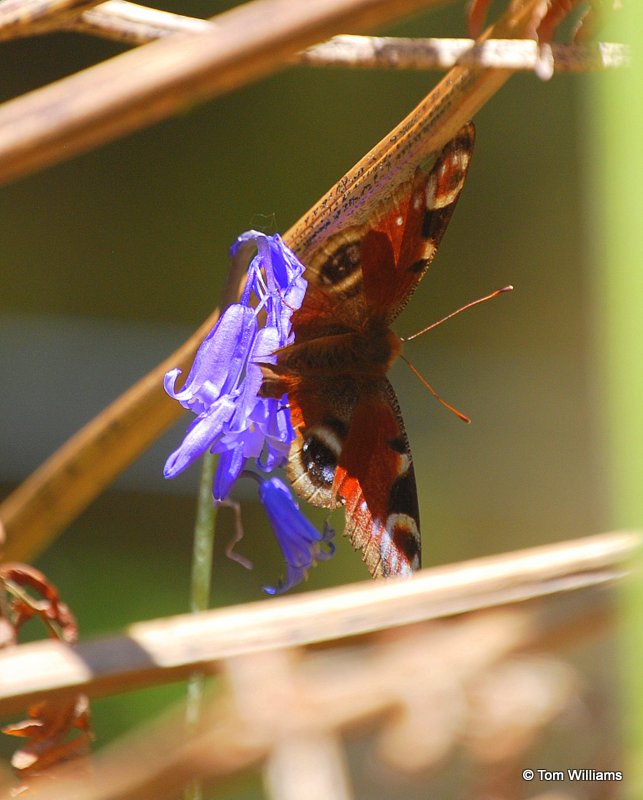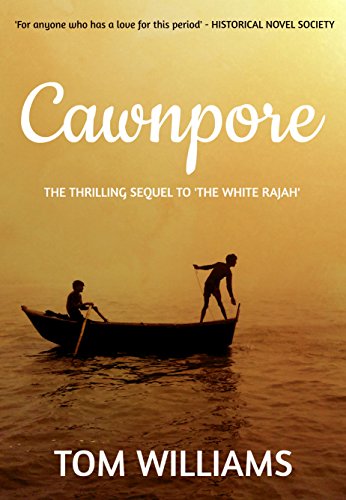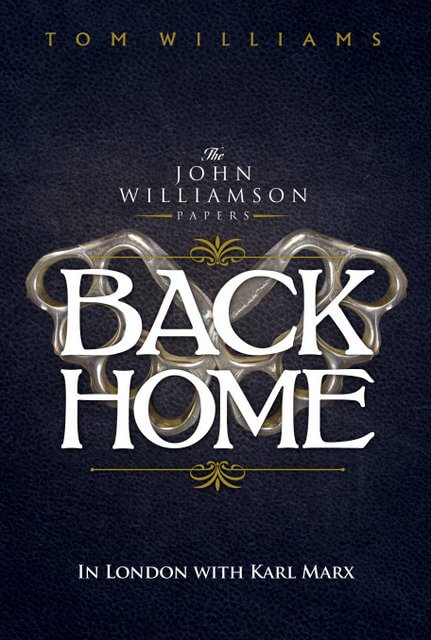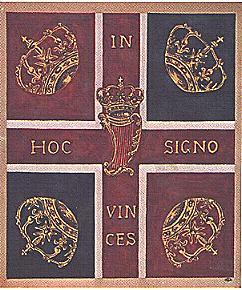
by TCW | May 24, 2019 | Uncategorized
This week I am delighted to welcome Karen King to my blog. Karen is a multi-published author of children’s books, YA and romantic fiction. She has had 120 children’s books published, two young adult novels, seven romantic novels and several short stories for women’s magazines. Take it away, Karen:
———————————————————————-
It sounds idyllic doesn’t it, to be a romance author living in Spain in a beautiful finca with lots of fruit trees and a swimming pool. You can imagine me sitting on a sunbed by the side of the pool, the sun shining, birds singing, reaching out for a grape from our very own grape vines (yes, really – and a selection of fruit and nut trees) but before you get too envious let me assure you that my life hasn’t always been like this. Although my first love has always been writing romance, it was a long and bumpy road before I got there. Let me tell you how it all began.
After a few months of the inevitable rejections I had an article accepted by Jackie magazine, this was way back in the 1980s. I was over the moon when they told me they’d like more articles and also asked me if I’d like to write some photo stories. Of course I said, yes, even though I’d never written a photo story before. I studied the photo stories in the magazine, wrote one up, and thankfully they liked it so I wrote more. I also wrote for other teenage magazines such as Loving and Patches and then sent a short story to Marvel aimed at one of their pre-school comics. They didn’t accept the story but asked me if I’d write a comic strip for a new title they had coming out called Acorn Green. I’d never written a comic strip before but figured it wouldn’t be too different from photo stories so said yes, asked for a couple of sample comic strips so I could see their house style, studied them, wrote one up and luckily they liked it so I was asked to write more comic strips and some short stories. Then I was approached by other magazine companies and ended up working for a range of titles, writing not only comic strips but activities, puzzles, quizzes and even a problem page. All because I kept saying ‘yes’, studying samples of each and having a go.
This gave me the confidence to approach Scholastic with an idea for an activity book, Christmas Fun, they liked it, gave me a contract and later commissioned me to write more activity books and joke books. Of course I said yes!
I approached other publishers to enquire if they needed any freelance writers for commissions and spent the next few years working for companies such as Puffin, Random House, Hachette, HarperCollins and others writing a variety of books including picture books, non-fiction, educational and even a selection of plays. All by saying ‘Yes’ and having a go. All the time though I really wanted to write romance books, but with a family to provide for I couldn’t afford to take the time off to write up a 75,000 word novel and send it out in the hope it would get published. I had to concentrate on work that would pay the bills and keep a roof over our head.
When my children were grown up I took my chance and wrote a romance novel called ‘Never Say Forever’. It was accepted by The People’s Friend for a pocket novel and then published in large print by Ulverscroft. I then wrote another romance novel titled ‘The Millionaire Plan’ which was almost accepted by Mills& Boon but then finally published, along with ‘Never Say Forever’ by a small US company, Astraea Press. I remarried and decided now was the time to try and make it as a romance novelist.
In 2014 I attended my first RNA conference and had a 1-2-1 with an editor who liked the synopsis of a story I had sent her and wanted to see the full. When I finished the story I sent it to her and to Accent Press. Accent Press replied within a couple of weeks that they wanted the story, my back- list romances and could I come up with ideas for two more stories. Suddenly I had a three book contract for romance novels. I was over the moon.
Then at the end of 2017, as I was about to move to Spain with my husband, an editor from Bookouture asked me if I would write for them. I had just finished my contract from Accent Press so was delighted to accept. Bookouture gave me a two book contract for the titles Snowy Nights at the Lonely Hearts Hotel and The Year of Starting Over. The Year of Starting Over is mainly set in Spain, and some of the experiences there are based on my own experiences, as we live in a finca in the campo and get our water from a well, just like Fiona and Pablo in the book, and like Holly I’m living my dream life in Spain. So you see, never be afraid to say ‘yes’ and have a go at something different, you never know where it will lead.😊
Contact links
Website: http://www.karenking.net/
Twitter: @karen_king
Karen King Romance Author Facebook Page
Karen King Young Adult Books Facebook Page
Pinterest: https://uk.pinterest.com/karenkingauthor/
Instagram: https://www.instagram.com/karenkingauthor/?hl=en
The Year of Starting Over

What if – to find yourself – you had to run away?
Last year was meant to be when Holly got her happy-ever-after. But stuck in a job that’s going nowhere, and a relationship that feels more like it’s going backwards… this year Holly has decided it’s time to change her life. She just has to:
– End the relationship with the commitment-phobic boyfriend
– Go on a proper adventure
– Learn to be herself again
– Definitely, categorically not fall in love.
Cramming her belongings into her little yellow Mini, Holly drives on to a ferry bound to Spain, to stay at a remote farmhouse near a beautiful village in the Andalusian hills.
But the day she arrives she nearly crashes her car into a gorgeous guy on a motorbike. He’s called Matias and their paths keep crossing, much to Holly’s irritation. Because as she learns to speak Spanish from the locals, finally starts laying out plans for her own design business, and sips sangria in the sunlit village square, Holly is beginning to remember who she is and what she wants.
So she won’t allow herself to be distracted by Matias. Because this year – for Holly – there are more important things in life than love. And she won’t let yet another bad relationship ruin everything… will she?
A moving and uplifting romantic comedy about living each moment and learning to trust yourself again, for fans of Jenny Hale, Debbie Macomber, and Sophie Kinsella.
Buy Links
Amazon: https://geni.us/B07KFGL5P2Social
Apple: http://ow.ly/Mfgd30nBig8
Kobo: http://ow.ly/edYm30nBijM
Googleplay: http://ow.ly/qTmS30nBi94
by TCW | May 17, 2019 | Uncategorized
If you follow me on Twitter, you will know that I do like to take the odd photo. This blog tends to be rather more text oriented, but I’ve just come back from a weekend in Wales and I’d like to share some pictures because Wales in Spring is too beautiful to keep to myself. Lambing is almost over and the fields are full of ewes with their young.

Young lambs really do “gambol”, kicking their legs in the air and jumping about, apparently just for the fun of it. It’s difficult to catch in a photograph, but this gives you some idea.

Nothing quite beats the colour of the trees in the autumn, spring comes a close second. I love all the different shades of green and they are most obvious at about this time of year.


And, of course, spring means bluebells.

Bluebells and butterflies. Does anything say ‘Spring’ better than this?

Walking through the woods you hear the constant chatter of birdsong. We saw a few interesting birds as well.



Crows often harass buzzards or kites that come too near their nests, as in the photo here.

I was excited to get this photo, which shows a crow actually attacking a buzzard which has turned upside down in midair so that it can strike back with his claws. I’ve never seen a buzzard harmed by a crow, but they do usually move away.

This seems an appropriate picture to finish with.

Higher resolution images of some of my photos from Wales are on my ‘Photos‘ page.

by TCW | May 10, 2019 | Indian history
I generally post on this blog on Fridays and this particular Friday is the exact anniversary of the events at the Meerut in the North West Provinces of India (now Uttar Pradesh) which sparked a rebellion that shook the British Empire and changed the history of India. This seems worth marking with a post about the events of 1857. I did post an earlier version of this a year ago, but I have more readers nowadays and I hope I will be forgiven for repeating it.
The army of the East India Company – the peculiar organisation responsible for European rule in the sub-continent – had recently introduced Enfield rifles with cartridges said to be greased with pig and beef fat. As the paper on the cartridges was torn off with the teeth when the rifle was loaded (‘biting the bullet’) their use was anathema to both Muslims and Hindus. Most commanding officers held off issuing the new cartridges, waiting for the unrest to calm down. Unfortunately, Colonel Carmichael-Smyth was not most officers. He ordered some of his troops to drill with the new cartridges and, when they refused, they were paraded in front of the rest of the regiment, sentenced to life imprisonment and marched off in chains. This was on 9 May 1857.
Nowadays we tend to see the events at Meerut as marking a violent break with the past by the sepoys (native soldiers). In fact, mutinies were not uncommon. Generally the approach of the military authorities was to try to handle them as smoothly and calmly as possible and they had no significant impact. Perhaps things at Meerut would have got out of hand anyway, given the deteriorating relations between Indians and Europeans at the time, But it seems likely that most of the problems were the result of gross stupidity by Colonel Carmichael-Smyth. (A young European officer in Carmichael-Smyth’s regiment wrote to his mother on 10 May – shortly before becoming one of the first Europeans to die – “It is generally supposed that [Carmicael-Smyth] will lose his command.”)
On 10 May the Indian troops rose in revolt, released the prisoners, burned the camp and killed about fifty European men, women and children before setting off to march to Delhi. The Indian Mutiny (or First War of Independence) had begun.
Nobody knows if the rumours were true. Even today there is doubt about what the cartridges were actually greased with. In any case, the Mutiny was not really about the fat on the cartridges. Trouble had been brewing for a while and the incident at Meerut simply served as the flash point for a revolt that many people had been expecting for some time. The Indians had become increasingly uncomfortable under British rule. The old, relaxed style of colonial government by men who had come to love India and worked alongside existing Indian customs and institutions was giving way to a more ‘modern’ approach. Christian missionaries were attacking Indian beliefs; the caste rules that governed Indian soldiers were being disregarded by European officers; Indian land was being seized on dubious legal grounds. In a word, the British, no longer captivated by India, were becoming arrogant.
Arrogance is a dangerous emotion when your army relies on the services of the very people whose culture and customs you are dismissing as uncivilised.

“The Sepoy revolt at Meerut,” from the Illustrated London News, 1857
The events at Meerut triggered a war of extreme savagery. Both sides killed without mercy and often with little distinction between combatants and non-combatants. Some Indians sided with the British, fighting against other Indians. Many officers were convinced that their men would remain loyal and literally trusted them with their lives. Sometimes that trust was rewarded, sometimes they were summarily shot.
The unrest led to much violence within the Indian community. Old scores were settled and Indians who had become rich under British rule were often denounced and murdered, their property looted.
Some British officers opened fire on men who were almost certainly loyal to them, forcing them to join the enemy. Some Indian princes changed sides, fighting for Europeans or rebels, depending on how the tide of battle changed.
It was against this background of bloodshed and treachery that I set the story of Cawnpore.

Cawnpore (now Kanpur) lay on the Ganges, about 250 miles from Meerut. The local ruler, Nana Sahib, was regarded as friendly to the British and, even after news of the Mutiny reached the town, the local British commander, General Wheeler, did not expect any trouble. As tensions grew, Wheeler made provision for the British to shelter around two hospital blocks in the British lines, building a low earth wall around them. This, though, was simply a position to wait out any local unrest – it was never seriously designed as a defensible fort.
When Nana Sahib decided to join with the rebels, Wheeler found himself trapped with around sixty European artillery men with six guns, eighty-four infantrymen, and about two hundred unattached officers and civilians and forty musicians from the native regiments. In addition, he had seventy invalids who were convalescing in the barracks hospital and around three hundred and seventy-five women and children.
The siege of Wheeler’s entrenchment became a tale of astonishing heroism and fortitude and it is central to the story I tell, but Cawnpore, for all the military trimmings, is not essentially a war story. My hero (insofar as he is a hero) is John Williamson, the narrator of The White Rajah. His life in the Far East has left him more comfortable with the princelings of the local Indian court than with the class-ridden Europeans he works with. He has friends on both sides of the conflict and struggles to stay true to them all. In the midst of a war that is fought with terrible ruthlessness, he tries to remain a decent person.
Cawnpore is a story about idealism and reality; about belonging and exclusion. It looks at the British colonial project and how it went so horribly wrong. It makes most people cry.
At the time that I wrote it, my son was serving in Afghanistan, in a conflict that can trace its origins back to the 1850s and before. Yet again, British troops were fighting and dying for a way of life they didn’t understand. Researching Cawnpore made me realise that the important thing about the war in Afghanistan wasn’t that it was right or that it was wrong: it was that it was futile.
Cawnpore is my favourite of all the books I’ve written. I do hope you read it.
Reference
Cadell, P. (1955). THE OUTBREAK OF THE INDIAN MUTINY. Journal of the Society for Army Historical Research, 33(135), 118-122.
by TCW | May 7, 2019 | Uncategorized
Every so often I remember that the purpose of writing a blog like this is to sell my book. So here is an update on the Williamson Papers and why you should be reading them. [NB There are major spoilers here, so don’t read on if you don’t want any idea of how things end.]

The first book of the Williamson Papers is The White Rajah. It introduces us to John Williamson, a young man who runs away from farming life in Devon to go to sea in search of adventure. He finds it when he becomes the companion of James Brooke, the first White Rajah of Sarawak.
James Brooke is an amazing figure. (I’ve written about his real-life history HERE.) Brooke arrives in Sarawak (in Borneo) in 1839 and is made ruler by Muda Hassim, the Bendahara of Brunei. He starts with nothing but the most liberal and humane of intentions, yet goes on to preside over a massacre so terrible that it leads to protests half a world away in London. It’s a fascinating story of how the high ideals of some Europeans produced such terrible outcomes when applied to other peoples’ countries.
WHY READ IT? It’s got pirates and headhunters and battles and loads of excitement. This is the background for a story about a good man who ends up doing terrible things and how this affects the man who loves him. There’s a lesson for today in the story about good and evil in the mid-19th century.
In Cawnpore, Williamson leaves Borneo, unable to live with what he has seen. He sails for India and takes up a post with the East India Company. He is sent to Cawnpore, where he finds himself at the centre of the events that will lead to the siege of the city and a massacre of Europeans unprecedented during colonial rule in the subcontinent. As with The White Rajah, the background to the story is closely based on real historical events. Williamson, ever the outsider, flits between the Indian and European camps, passing himself off as an Indian amongst the sepoys (something that we know Europeans managed to do during the Mutiny). Again, Williamson struggles to reconcile his own liberal principles and the realities of colonial life. This time it is the Europeans who are (in Cawnpore, at least) on the losing side. Williamson becomes one of a handful of people to survive the siege and its bloody aftermath. The experience marks him, though. He has watched his Indian friends massacre women and children without mercy and then been rescued by European soldiers who strike back with awful savagery. Once again he turns his back on a European colony, this time to return to England, where he hopes at last to find peace.

WHY READ IT? The siege of Cawnpore is one of those bits of colonial history that we have decided to forget about but it’s an amazing story – even if nobody involved comes out of it looking good. This lets you top up your historical knowledge and enjoy a good read at the same time. And I can’t help thinking that if more people had known anything about the history of the region, some recent foreign policy adventures might have been given a bit more thought.
Although Cawnpore is my personal favourite, some people prefer Back Home, which brings the cycle back to England. It’s on a much smaller scale than the others, with most of the action set in London’s Seven Dials, but it features the same themes. Williamson finds a country he hardly recognises. Industrialisation at home and military expansion abroad have made Britain into a dynamic political and economic power that dominates the world. Yet Williamson finds the same divide between the poor and the rich that he saw in the Far East. A friend from his youth has tried to escape his poverty by entering a life of crime in the slums of London. Faced with threats of war with France and concern about Communist terrorists, the government needs to smash a foreign plot – and if they can’t find a real foreign plot, they’re quite happy to invent one. Williamson’s friend is caught in the machinations of a Secret Service determined to prove him an enemy agent and, in his attempts to help him escape, Williamson is once again caught between the machinations of the powerful and the resistance of the powerless.

Back Home ends with Williamson back in Devon where he started out in The White Rajah. But will he finally find happiness there?
Read the book and find out.

by TCW | May 3, 2019 | Uncategorized
James Burke was a real person and my first book about him, Burke in the Land of Silver, sticks reasonably closely to as much as we know about the true story of his life.
He was born into an Irish Catholic family in 1771. In 1792 he fought for the French in the Regiment of Dillon, a regiment that was largely made up of Irishmen. He served in the West Indies where he became fluent in Spanish. At the time England and France were not at war and there was nothing to stop British citizens from fighting under the French flag. However this changed in 1793 and Burke found himself fighting against the British. In September of that year the Regiment of Dillon surrendered to British forces. They were given the option of serving under the British flag and they chose this rather than become prisoners of war.
 Flag of the Regiment of Dillon
Flag of the Regiment of Dillon
Although he nominally remain in his old regiment, between 1794 and 1804 Burke was seconded on intelligence work, reporting directly to the British commander-in-chief, the Duke of York.
In 1804 Burke travelled to South America. It was at this point that he requested to be transferred officially to an English regiment. From then on he moved from regiment to regiment at almost dizzying speed. By 1806 he was serving as a captain in the prestigious 2nd Infantry (the Queen’s Royal Regiment). He held a number of brevet ranks (temporary promotions awarded while on particular assignments carrying additional responsibility) and was appointed a major in the Queens Royal Regiment in 1807. He finished his military career as a lieutenant colonel on special services from 1825 to 1826. The rapid changes in rank and regiment are an indication of the fact that he was often detached on special assignments ie he was a spy.
In Burke in the Land of Silver I suggest that he had an enthusiastic romantic life. During his adventures in South America and Spain (essentially as recorded in the book) it seems likely that he seduced the wife of his Buenos Aires contact, who went on to become the Viceroy’s mistress. His trip to Spain probably resulted in a liaison with the Queen (not as improbable as it sounds as she was notoriously promiscuous). On his return to South America a stay in Brazil seems to have led to an adventure with the Princess Royal, a woman who had inherited her mother’s carnal appetites.
Despite his adventures with women, Burke seems to have been very good at his job and almost certainly played in a key role in the successful capture of Buenos Aires by British forces in 1806.
Although Burke in the Land of Silver is based on Burke’s actual adventures, later books in the series are not. In each case the historical background is accurate and in some cases British agents were probably involved. The next (so far unpublished) book, which is set in the Peninsular War, sees Burke displaying many of the characteristics of another real spy, Sir John Waters, but I’ve kept Burke’s name and what I can imagine of his character.
Intelligence work was a vital part of the British war effort, as it has been in most wars since. Some of the details of Burke’s work are fact-based, others are entirely fictional, but we can be confident that James Florence Burke (yes really) was busy as a Confidential Agent of His Majesty for most of the time from 1794 to 1826.
ACKNOWLEDGEMENTS
The only detailed account of Burke’s life I have been able to find in English is A soldier under two flags. Lieutenant-Colonel James Florence Burke : officer, adventurer and spy by Peter Pyne, published in Etudes Irlandaises 1998 pp. 121-138.






















 Flag of the Regiment of Dillon
Flag of the Regiment of Dillon